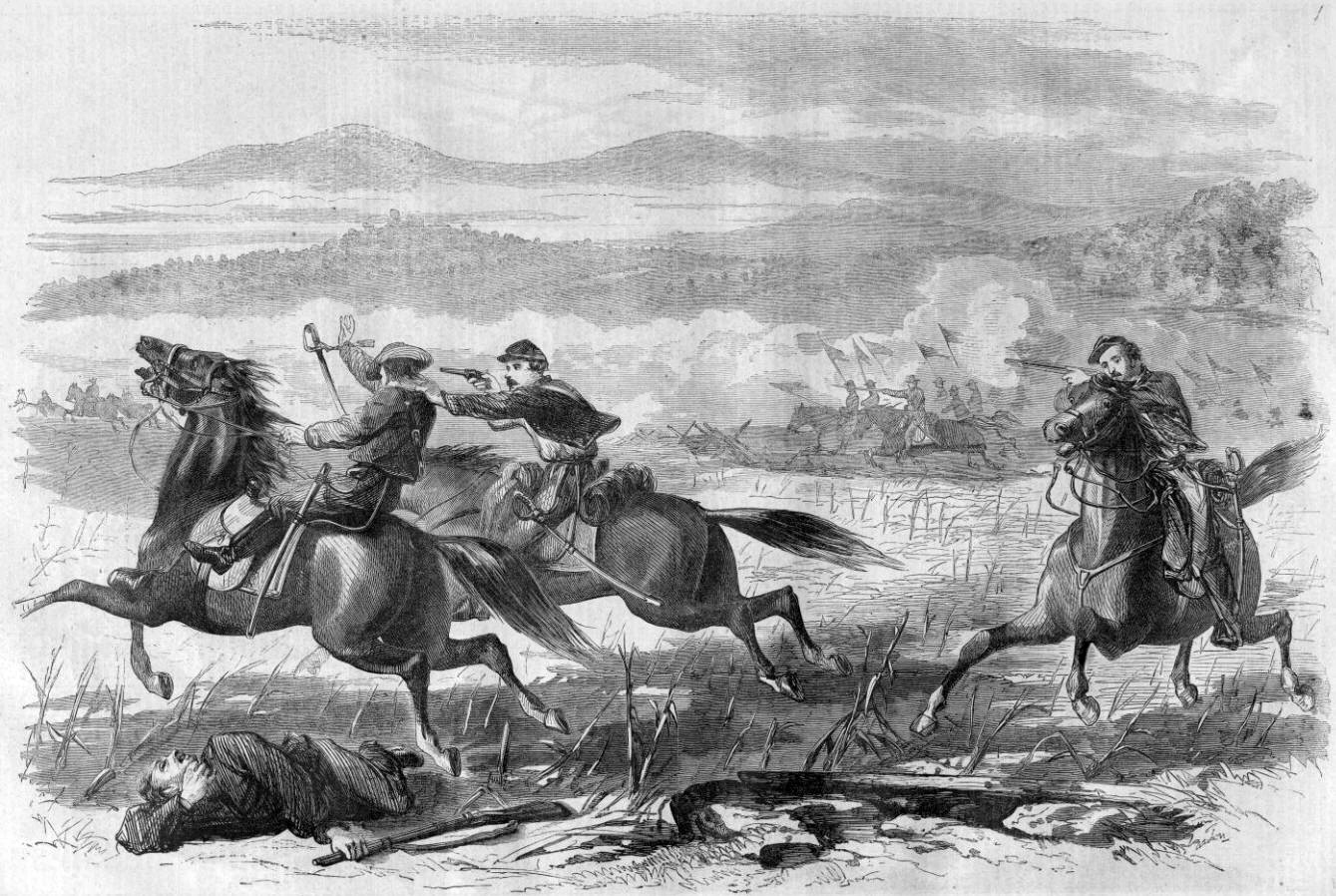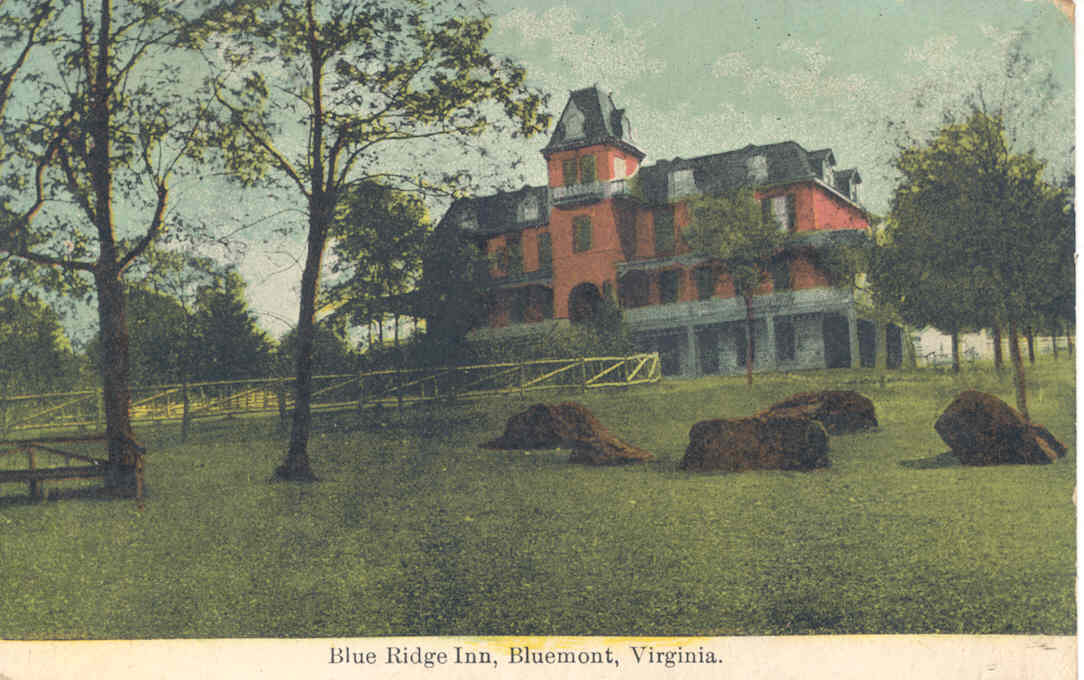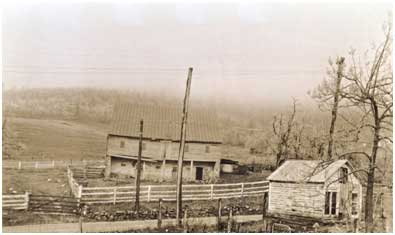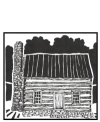Since its humble beginnings in 1769, Bluemont has experienced many transformations
Over the decades, both visitors and residents have come to appreciate its rich history, heritage, and relaxed way of life.

The Start: 1769-1865
In 1769, the land where our village now stands was conveyed to John Augustine Washington, the half-brother of George Washington, by George Carter, who had received a land patent from Lord Fairfax. Washington then transferred 624 acres to Edward Snickers, who sold the land to Richard Wistar of Philadelphia in 1777. Wistar later sold it to William Clayton, whose son, Amos Clayton, built the grand Clayton Hall beside the Snickersville Turnpike in 1797.
In 1807, when Snickers operated a ferry across the Shenandoah River, the area was known as Snickers Gap. The settlement officially became known as Snickersville through an act of the Virginia General Assembly in 1826. By 1853, Snickersville had grown to include “fifteen dwelling houses, one house of public worship, one common school, one Masonic hall, two factories, one tailor, one wagon maker, three blacksmiths, and one copper and tin plate worker.”
During the Civil War, Snickers Gap served as a strategic route between the contested Shenandoah Valley and Union-occupied Northern Virginia. Both Union and Confederate armies passed through the gap. In October 1862, a skirmish erupted in the village when Union soldiers, seeking a good meal, encountered a Confederate band. This clash, known as the “Battle of Snickersville” on October 22, 1862, was illustrated in Harper’s Magazine under the title “The Advance-Guard of the Army of the Potomac Attacking the Rebels Near Snickersville.” The dramatic print depicted two Union cavalrymen pursuing a Confederate rider. The battle resulted in four Union soldiers killed, two wounded, and ten taken prisoner; three Confederate soldiers were killed, and one was wounded.
Later, on Sep 15, 1864, there was another skirmish—the Mt Airy Fight—about 3/4 mile away from town further up Snicker’s Gap.

The Middle: The Resort/Railroad Era 1893-1939
The Resort Era began in 1893 with the construction of the Blue Ridge Inn near Bears Den Rock. Built by Washington businessman Jules Demonet and financially supported by William Lynn of Airmont, the Inn quickly became a popular retreat for wealthy Washingtonians seeking relief from the summer heat. Before the arrival of the railroad, the primary means of travel to and from the village were two major roads: Route 734, which connected Snickers Gap to Aldie, and Route 760, which linked Bluemont to Route 7.
In 1900, with Snickersville already becoming known for its summer visitors, the Southern Railroad (later known as the Washington & Old Dominion) with the help of Bluemont citizens, extended its tracks westward from Round Hill, with financial backing from railroad magnate J.P. Morgan. The first train arrived in Bluemont on July 4. Shortly afterward, the town’s name was changed from Snickersville to Bluemont, as it was believed to sound more appealing to tourists. The last train of the line was nicknamed “The Virginia Creeper” due to its slow pace and numerous stops along the way.
The village prospered during the following years. Between 1900 and 1905, the E.E. Lake Store was established, which included an ice cream parlor, a general store, a barber shop, a post office, and an upstairs meeting and dance hall. A branch of the Loudoun National Bank of Leesburg briefly operated out of the store but was forced to close after robbers used explosives to open the safe in 1907. In addition to the store, the village boasted two other general merchandise stores, a millinery shop, a livery stable, three hotels, boarding houses, blacksmiths, wheelwrights, carpenters, and a harness shop. Two physicians and a dentist also set up practice in Bluemont. Visitors could take buggy rides to Bear’s Den for a scenic view of the valley, while traveling salesmen enjoyed hearty meals at Mrs. Weadon’s for just 50 cents, which included fried chicken, country ham, fresh vegetables, hot rolls, pies, and milk (buttermilk or sweet milk).
Bluemont thrived throughout this prosperous period.

Not So Long Ago: 1939–Present
In the years following 1939, Bluemont experienced significant changes. The Blue Ridge Inn tragically burned to the ground in 1912, and the railway ceased operations in Bluemont in 1939. Once a popular destination for the wealthy of Washington, Bluemont shifted its focus to its fertile lands and agricultural resources, thriving through farming.
Farming in the region diversified as corn replaced wheat as the primary crop, and the dairy and beef industries grew in importance. By 1945, Loudoun County had 2,015 farms. Between 1909 and 1944, the production of whole milk by Loudoun farmers increased by over 1,200%, rising from 4.4 million pounds to 56.3 million pounds.
While Bluemont remained a weekend retreat for some, many others chose to make the village their permanent home. Those who did formed the Bluemont Citizens Association in 1955, followed by the establishment of the Bluemont Fair in 1970 to celebrate the town’s history and heritage.
Today, Bluemont enjoys a renewed sense of prosperity. The village is home to a charming mix of historic homes, buildings, former schoolhouses, and active businesses. The surrounding area stretches across the crest of the Blue Ridge, including a portion of the Appalachian Trail, and down to the Shenandoah River. Bluemonters—industrious and innovative—cherish the contributions of those who shaped life in this idyllic setting at the foot of the Blue Ridge.
